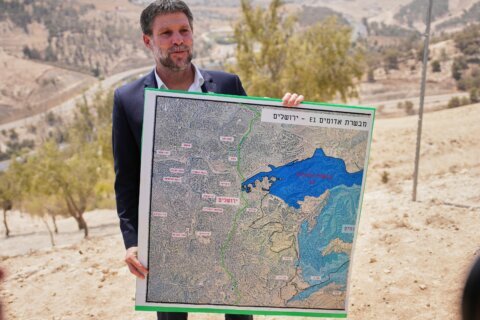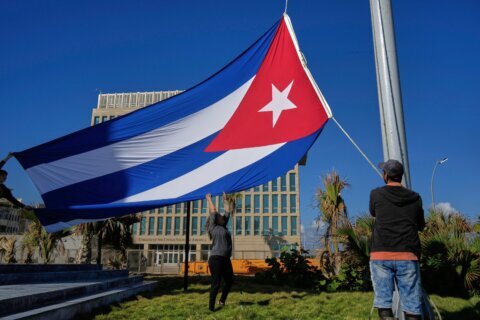The radioactive explosion happened in the early hours of Saturday, April 26, 1986. By the end of that weekend, Soviet authorities began the evacuation of tens of thousands of people living around the Chernobyl nuclear power plant, the site of the largest nuclear catastrophe in history. Abandoned buildings and parks have stood frozen in time since then — a memorial to the disaster, and now a popular tourist destination.
Largely undisturbed by civilization for the past three decades, vegetation, animals and decay have laid claim to the abandoned territory, captivating the imaginations of urban explorers, photographers, gamers and history buffs. Armed with handheld Geiger counters to measure radiation levels, visitors who are over 18 years old and agree to safety protocols can wander around the post-apocalyptic setting with local tour guides.
Officially, almost 3,000 people from 50 countries visited the restricted Chernobyl exclusion zone in northern Ukraine last year, but local tour operators estimate actual visitors to be between 12,000 and 15,000. They say more tourists came before 2014, a year that began with violent protests in the capital city of Kiev and ended with hostilities with pro-Russian separatists in the eastern part of the country.
But on the 30th anniversary of the disaster, tour providers say they are very busy.
“Most visitors like to see and touch history, the dark side of human history,” says Victor Korol, director of SoloEast Travel.
[THE MANHATTAN PROJECT: What to Do About America’s Nuclear Weapons]
Targeted travel to locations of famous disasters or places where atrocities have occurred has earned the moniker of morbid or dark tourism.
“In the same way that we see thrillers at the cinema and read detective novels, we seek excitement. We want to let ourselves be frightened at a distance without getting involved too much in the incident,” says Thomas Blom, a professor of human geography at Karlstad University in Sweden. Blom cites New York City’s Ground Zero as a top dark tourism attraction.
Other examples might include graves of icons, like the Althorp House in England where Princess Diana is buried, or the Mao Mausoleum in Beijing. A prison that once tortured political dissidents has been turned into an interactive theater hotel in Latvia. Other attractions might be scenes of sudden death caused by natural disasters, like a Sri Lankan train derailed by the 2004 tsunami or, famously, Pompeii, an ancient Roman city buried by a volcanic eruption in 79 A.D.
Michael Bowman, faculty member in Louisiana State University’s communications department, is critical of the term dark tourism. “It implies that there’s something distasteful about it, something morbid, something weird,” he says.
Bowman cites historic battlefields as tourist destinations widely accepted as commemorative and educational, rather than morbid. Post- Hurricane Katrina tours of New Orleans were viewed with suspicion in 2005, but he says the tourists often returned as volunteers and some relocated there, investing in the city.
“It’s more than just gawking at the misery of other people. … One of the most profoundly human things we can do is to walk in another person’s shoes, even if only for an hourlong tour,” says Bowman, adding: “as long as it’s not tasteless profiteering.”
In Chernobyl, it’s not uncommon for tour operators to have a personal or emotional connection to the destination.
Sergii Mirnyi, a Ukrainian citizen and founder of Chornobyl Tour, was a chemical defense specialist in the Soviet army when he received a mobilization notice, just a few days after the power plant accident in 1986. He arrived on the fifth day and spent the next two years in the contaminated area, monitoring radiation levels and assisting in recovery efforts.
[READ: How to Protect Nuclear Plants From Terrorists]
He went on to earn a degree in environmental sciences, specializing in nuclear disasters and their fallout on inhabitants and first responders. Despite predictions of catastrophic health impacts, he says much of the long-term damage was in fact psychological.
“I understood we needed to change the symbolic meaning of the event. … Any association with Ukraine abroad is Chernobyl, and of course it carries a negative connotation,” Mirnyi says. “Radiation is now down 1,000 times [from 1986] and we can show Chernobyl as a victory, including an intellectual victory,” because it’s been contained. He’d like to see the area officially preserved and developed for researchers and visitors.
But Ukraine’s government views the zone as a reminder of a catastrophe that it’s still dealing with 25 years after the fall of the Soviet Union.
“Frankly, if I was asked to be a tourist in the Chernobyl zone, I would reject it,” says Valeriy Chaly, Ukraine’s ambassador to the U.S. He points out that millions of Ukrainian citizens are still feeling the physical, financial and psychological impact of the disaster.
Instead of promoting tourism to the region, Chaly says the government is concerned with securing the $2 billion protective structure over the Chernobyl nuclear power plant, which is still leaking radiation, and the loss of oversight and access to nuclear facilities in Crimea, which was annexed by Russia in 2014.
But Ukrainian tour operators like Mirnyi and Korol believe there are benefits to drawing curious visitors to Chernobyl that should not be overlooked.
[READ: Another Chance for Nuclear Power?]
“Personally I think it’s good and useful, not only for them but also for [Ukraine] … not only to remember but also to show to other people how they should not do things in the future. And to be very careful with dangerous things,” Korol says.
Indeed, governments and international organizations studied both the mistakes and successes of what happened in Chernobyl, adopting higher standards as a result.
Still, in 2011, Japan’s Fukushima Dai-ichi nuclear power plant had a meltdown, and joined Chernobyl as a Level 7 disaster on the International Nuclear Event Scale, the maximum classification possible. The International Atomic Energy Agency defines this category as “a major release of radioactive material with widespread health and environmental effects requiring implementation of planned and extended countermeasures.”
Efforts to make Fukushima a tourist destination are already underway, even as officials estimate that it won’t be safe to visit for another three decades.
More from U.S. News
30 Years After Chernobyl, Anxious Eyes Turn to China
Q&A: Recalling Chernobyl, 3 Decades Later
Ukraine Marks Chernobyl Disaster Anniversary
Chernobyl: A Toxic Tourist Destination originally appeared on usnews.com







